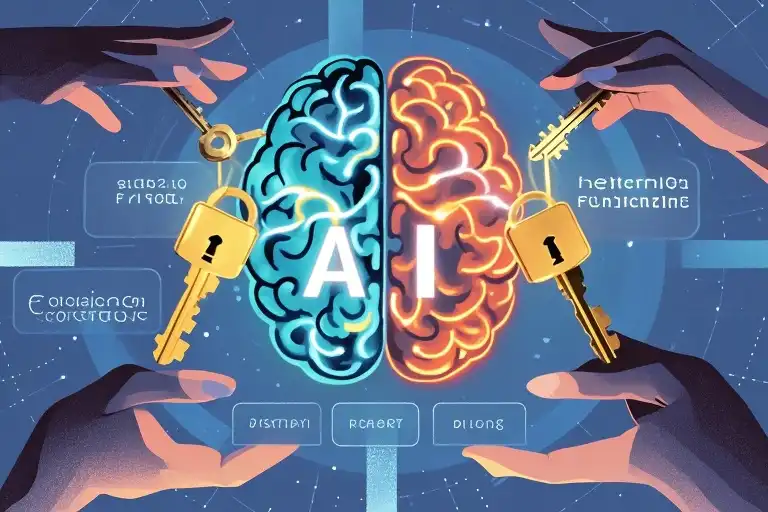Hey there! Let me ask you something:
Have you ever felt ChatGPT just doesn’t get you?
You carefully type a request, wait anxiously, and then… facepalm. The response feels generic. Wrong tone. Missing key points. Like ordering a gourmet pizza and getting frozen nuggets instead.
We’ve all been there.
Here’s the uncomfortable truth: Most of us accidentally sabotage ChatGPT by making three critical mistakes:
- 🤖 Asking vague questions (then complaining about vague answers)
- 📉 Forgetting to show examples (like expecting mind-reading)
- 🎭 Ignoring personality settings (then getting shocked by robotic replies)
But what if I told you there’s a better way?
After coaching 2,300+ professionals through my [Artificial Corner] newsletter, I’ve discovered four conversation-changing techniques that transform ChatGPT from frustrating to phenomenal.
Let’s fix this together – no tech jargon, just actionable strategies you can test right now.
🔑 Mistake-Busting Technique #1: The “Show Don’t Tell” Method
Why Your ChatGPT Feels Clueless
Imagine teaching a child to bake cookies by saying:
“Make something sweet.”
Chaos ensues. Burnt marshmallows? Rock-hard fudge?
That’s exactly how ChatGPT feels with standard prompts.
The Fix: Few-Shot Standard Prompts
Your Action Plan:
- Describe the task (“Extract airport codes”)
- Show 2-3 examples
- Present your actual request
Before (Broken Prompt):Extract airport codes from: “I want to fly from Orlando to Boston”
After (Magic Prompt):
Task: Identify airport codes in travel requests.
Examples:
1. Text: "Flight from Los Angeles to Chicago" → Codes: LAX, ORD
2. Text: "Need tickets from Dallas to Miami" → Codes: DFW, MIA
Now process: "I want to fly from Orlando to Boston" Result: Perfectly extracts MCO (Orlando) and BOS (Boston).
Pro Tip: Use contrasting examples. Show both correct and incorrect formats to teach boundaries.
🎭 Mistake-Busting Technique #2: Personality Overhaul
Why ChatGPT Sounds Like a Robot
Ever get replies that feel… off?
Last week, a bakery owner asked me:
“Why does ChatGPT write product descriptions like a PhD thesis?”
Simple answer: We forget to assign roles.
Your Action Plan:
- Define the persona
- Specify communication style
- Set expertise level
Before (Lifeless Prompt):Write a social media post about our new sourdough bread
After (Character-Driven Prompt):
Act as a 25-year-old pastry chef turned Instagram influencer. Use:
- Emojis (🥖✨)
- Short sentences
- Hungry-making sensory words
- 1 bread pun
Describe our new slow-fermented sourdough with caramelized crust. Result:
*”Meet your new breakfast BAE 🥰 18hr fermentation = crackly golden armor 🤤 Inside? Cloud-soft crumb whispering sweet tangy secrets 🎻 PS: This loaf’s so good, it’s *knead* to be believed! 🎉”*
Try This: Assign unexpected roles. Try “friendly grandmother explaining tech” or “stand-up comedian teaching chemistry.”
🌍 Mistake-Busting Technique #3: Context Anchoring
Why ChatGPT Hallucinates
Last month, a programmer raged:
“ChatGPT invented fake Python libraries!”
Classic case of floating context – like asking for directions without naming the city.
Your Action Plan:
- Provide background
- Set boundaries
- Pre-empt errors
Before (Unanchored Prompt):Write Python code to scrape website data
After (Context-Rich Prompt):
Constraints:
- Use only BeautifulSoup4 and requests
- Avoid JavaScript-heavy sites
- Add error handling for 404s
Write a web scraper that:
1. Takes URL input
2. Extracts <h1> and first <p>
3. Exports to CSV Result: Clean, functional code with proper exception handling.
Golden Rule: Treat ChatGPT like a brilliant intern – they need clear briefs to avoid creative detours.
🔄 Mistake-Busting Technique #4: Conversation Layering
Why One-Shot Prompts Fail
Imagine proposing marriage on a first date.
That’s what we do when expecting perfect answers from single prompts.
The Fix: Iterative Refinement
Your Action Plan:
- First Layer: Brainstorm
- Second Layer: Critique
- Third Layer: Polish
Real-World Example:
Layer 1 (Rough Draft):Give me blog topics about AI in healthcare
Layer 2 (Critical Feedback):
Too generic. Focus on:
- Ethical dilemmas
- Less-known startups
- Practical tips for doctors
Remove any topics about AI diagnostics. Layer 3 (Style Shift):
Rewrite the top 3 ideas with clickable titles in the style of MIT Technology Review. Result:
- “When AI Prescribes Bias: The Silent Crisis in Algorithmic Care Protocols”
- “Stealth Mode Heroes: 3 Healthcare AI Startups Rewriting the Rules Without VC Hype”
- “From Skeptic to Superuser: A Surgeon’s 90-Day ChatGPT Experiment”
Your Next Steps (Free Tools Included!)
- Download My Cheat Sheets: Get instant access to [150+ proven prompt templates] across industries.
- Join Our Community: 42,000+ professionals refining their AI skills together.
- Test Drive These Techniques: Start with my favorite exercise:
5-Minute Challenge:
*”Ask ChatGPT to explain quantum computing three ways:
- To a 5th grader
- To a CEO
- In a Taylor Swift song parody”*
You’ll laugh. You’ll learn. You’ll realize: Better prompts = Smarter AI.
Final Thought: ChatGPT isn’t “bad” – we just haven’t learned to speak its language… yet.
Every misunderstood prompt is a chance to improve. Every awkward reply teaches us to communicate clearer.
Now go show that AI who’s boss – with examples, roles, and the confidence of someone who finally gets it. 😉
(P.S. Hit reply if you want my secret sauce for taming ChatGPT’s creativity – works like a charm for overenthusiastic copywriters!)



